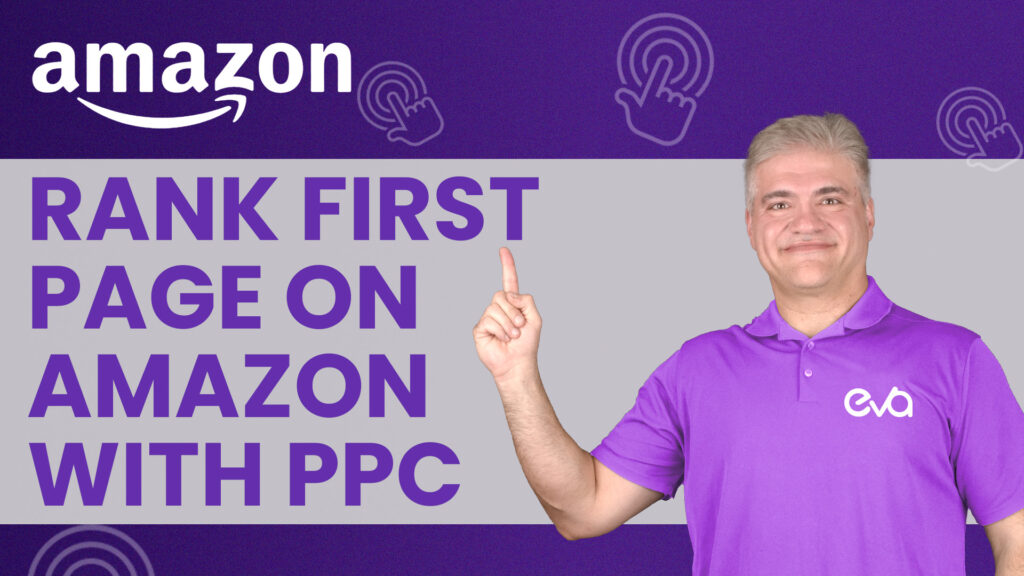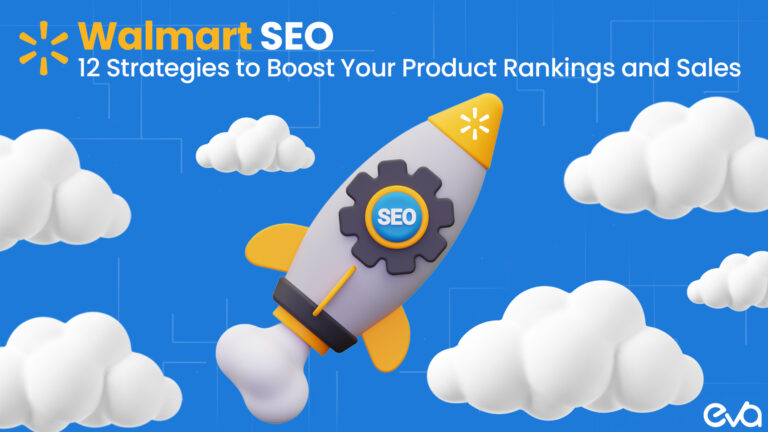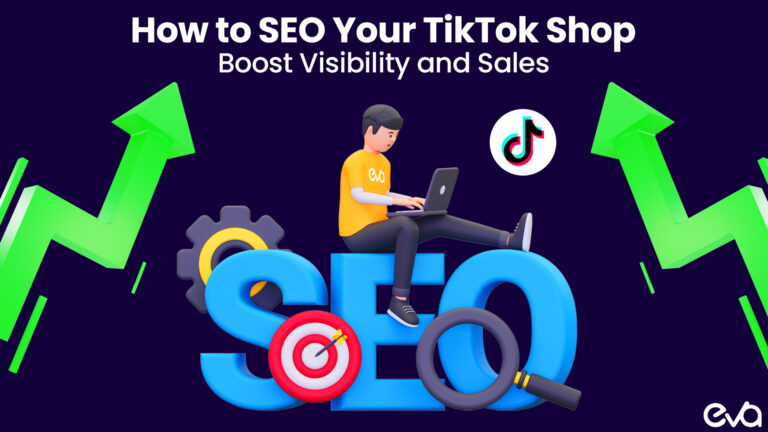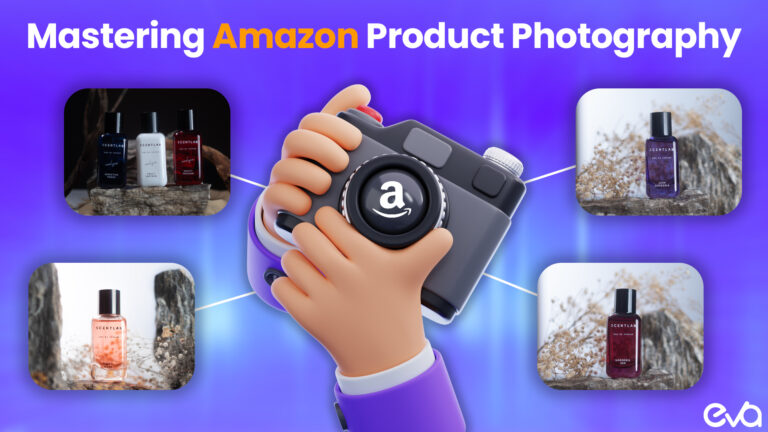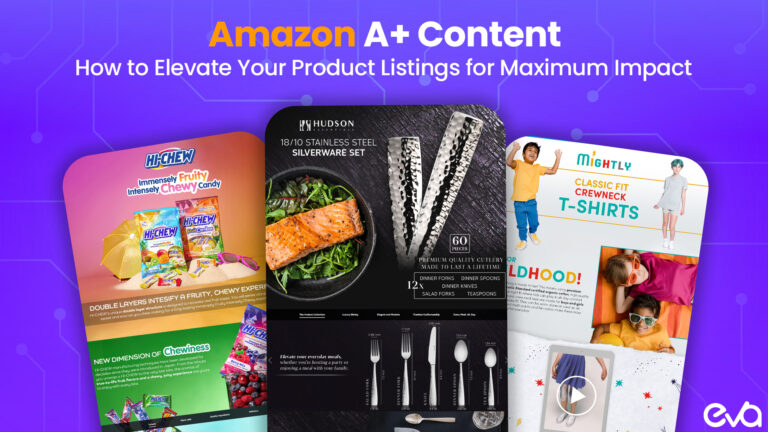When it comes to dominating Amazon’s search results, being on the first page is a game-changer.
Let’s delve into the exact strategies that can help your product climb the ranks, leveraging Amazon PPC and more.
Ranking on the first page of Amazon isn’t just a dream—it’s an achievable goal. With Amazon PPC (Pay-Per-Click) advertising, you can significantly boost your product’s visibility and sales.
But how does this work, and why is it so crucial? In this post, we’ll break down the strategies and show how Eva Commerce can supercharge your efforts.
Table of Contents
Why Ranking on Page One Matters
When customers search on Amazon, they rarely look beyond the first page. In fact, 70% to 90% of clicks and sales happen within the first three positions.
This makes it essential for your product to appear prominently. By ranking organically on page one, you not only save on PPC costs but also increase your profit margins.

The Role of PPC in Ranking
While ranking organically is the ultimate goal, using PPC can give your product the initial push it needs. However, high bids are necessary for top positions, which can be costly.
Here’s a deep dive into how you can use PPC to eventually achieve organic ranking.
Types of Amazon PPC Campaigns
Understanding the different types of PPC campaigns on Amazon is crucial for effectively boosting your product’s visibility. Here are the primary types of campaigns you can run:
- Sponsored Products:
- Description: These ads appear in search results and on product detail pages. They are the most common and often the most effective type of PPC campaign.
- Benefits: High visibility, directly targets customers searching for related products.
- Strategies: Utilize broad, phrase, and exact match types to capture a wide range of search queries.
- Sponsored Brands:
- Description: These ads feature your brand logo, a custom headline, and multiple products. They appear in the search results, usually at the top.
- Benefits: Great for brand awareness and driving traffic to a collection of products.
- Strategies: Highlight your best-selling or highly-reviewed products to capture attention.
- Sponsored Display:
- Description: These ads appear on and off Amazon, targeting shoppers based on their browsing behavior.
- Benefits: Reach potential customers who have viewed similar products, increasing your retargeting efforts.
- Strategies: Use for retargeting campaigns to convert interested but undecided shoppers.
- Amazon DSP (Demand-Side Platform):
- Description: This is a programmatic ad-buying platform that allows you to buy display, video, and audio ads both on and off Amazon.
- Benefits: Advanced targeting and reach, ideal for comprehensive brand campaigns.
- Strategies: Best used for larger budgets and more complex advertising strategies.

Step-by-Step Strategy to Rank Organically
1. Keyword Research
Keyword research is the foundation of your PPC and organic ranking strategy. Here’s how to do it effectively:
- Using Eva Team:
- Eva team will conduct a key word search for you and make sure you have all the relevant keywords that are relevant to your product
- Filter out keywords that rank beyond position 60 and have less than 500 searches a month.
- Narrow down to a list of 50 high-priority keywords.
- Using Eva’s AI-Powered Platform:
- Leverage Eva’s AI to analyze market trends, competitor data, and your product’s performance.
- Identify keywords with high conversion potential and search volume.
- Continuously update your keyword list based on real-time data.
- Using Search Query Performance Report:
- Access this report via Amazon Seller Central under Brand Analytics.
- Identify keywords with the highest purchase share and cross-check with their organic rank.
- Focus on keywords where you have high purchase share but low organic rank.
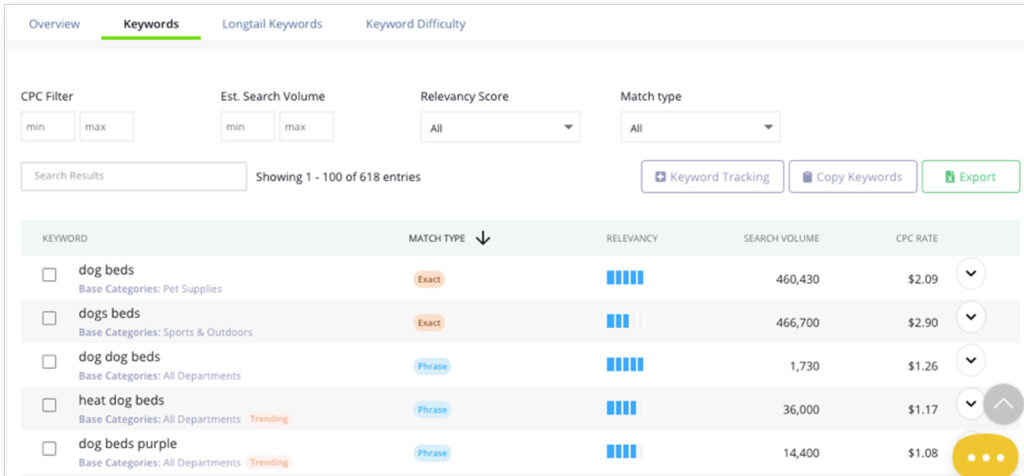
2. Optimize Your Listing
Before launching PPC campaigns, ensure your product listing is optimized to convert visitors into buyers. Key areas to focus on include:
- Product Title:
- Include your primary keyword at the beginning of the title.
- Make it concise and informative, highlighting key features and benefits.
- Bullet Points:
- Use bullet points to elaborate on product features, benefits, and unique selling points.
- Include secondary keywords naturally within the text.
- Backend Search Terms:
- Fill in backend search terms with relevant keywords that didn’t fit into the title or bullet points.
- Avoid repeating keywords already used in the title and bullet points.
- Images and Videos:
- Use high-quality images and videos that showcase your product from multiple angles.
- Include lifestyle images to help customers visualize using the product.
- A+ Content:
- Enhance your listing with A+ Content (formerly Enhanced Brand Content) to provide detailed product information.
- Use this space to tell your brand story and highlight key differentiators.
3. Launch PPC Campaigns
With your listing optimized, it’s time to launch targeted PPC campaigns. Follow these steps for a successful campaign:
- Campaign Structure:
- Create separate campaigns for each match type: broad, phrase, and exact.
- Set up one campaign, one ad group, and one keyword for precise tracking and optimization.
- Budget and Bids:
- Start with a daily budget of at least $200 to gather sufficient data.
- Begin with lower bids and gradually increase them based on performance.
- Aim for a competitive bid to secure top positions in sponsored results.
- Ad Copy and Creative:
- Write compelling ad copy that includes your primary keywords and highlights key benefits.
- Use high-quality images or videos that align with your listing content.
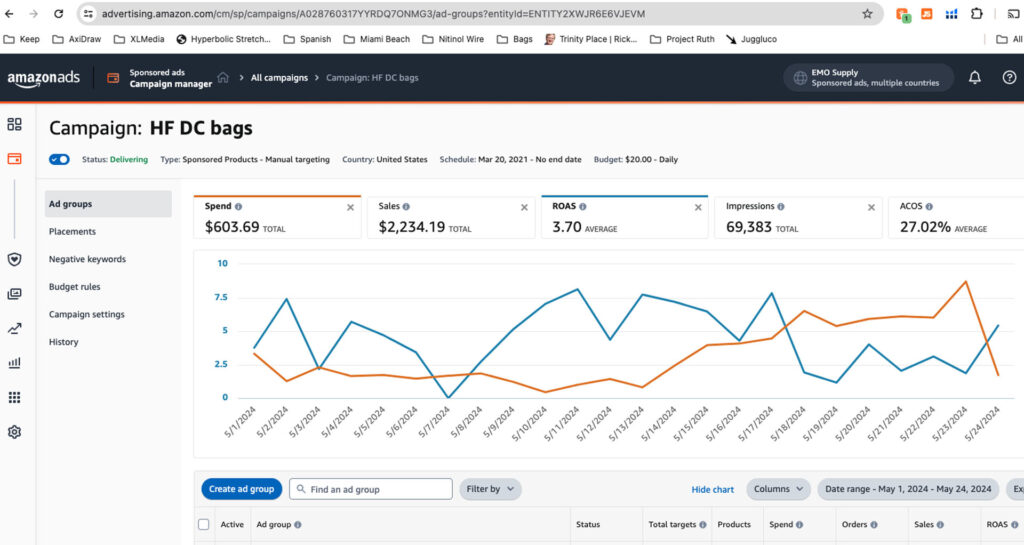
Monitoring and Adjusting Campaigns
Continuous monitoring and adjustment are crucial for maintaining and improving your PPC performance. Here’s how to do it:
- Track Performance Daily:
- Monitor your organic and sponsored rank for each targeted keyword.
- Use a tracking tool to record daily ad spend, clicks, conversions, and organic rank changes.
- Optimize Bids and Budgets:
- Adjust bids based on performance data to maximize ROI.
- Increase bids for high-performing keywords and reduce or pause bids for underperforming ones.
- Analyze Click-Through and Conversion Rates:
- Regularly analyze your click-through rate (CTR) and conversion rate (CVR) to identify areas for improvement.
- Make necessary adjustments to your listing and ad creatives to enhance these metrics.
- Evaluate ROI:
- Calculate your return on investment (ROI) for each campaign to ensure profitability.
- Focus on campaigns and keywords that deliver the highest ROI.
Advanced Tips for Sustained Ranking
Utilize Brand Analytics
Amazon Brand Analytics provides valuable insights into customer behavior and keyword performance. Use this data to:
- Identify High-Performing Keywords:
- Focus on keywords that generate the most clicks, add-to-carts, and conversions.
- Understand Customer Behavior:
- Analyze customer search patterns and adjust your campaigns to align with their preferences.
Leverage AI and Expert Support
Eva’s AI platform offers powerful tools to enhance your advertising strategy:
- Automated Insights:
- Receive automated recommendations for keyword optimization, bid adjustments, and budget allocation.
- Expert Support:
- Access expert guidance to refine your advertising strategies and maximize ROI.
Adjust According to Market Trends
Stay agile by adjusting your strategies based on market trends:
- Seasonal Adjustments:
- Modify your campaigns to capitalize on seasonal trends and shopping events.
- Competitor Analysis:
- Regularly analyze your competitors’ strategies and adjust your campaigns to stay ahead.
How Eva Can Help
Eva Commerce is a leading eCommerce technology company that empowers brands to grow profitably on marketplaces like Amazon and Walmart.
Our AI platform integrates inventory, conversion rates, and profitability metrics to provide a context-aware advertising solution.
As an Amazon Advanced Partner and Walmart Strategic Solution Partner, we offer unparalleled support in optimizing your advertising strategies.
Eva’s experts analyze data to recommend the best actions for your advertising campaigns, ensuring maximum efficiency and ROI.
By focusing on profitability, we help brands achieve sustainable growth and invest effectively in multimedia marketing efforts.
Ready to elevate your Amazon business? Book a free consultation with Eva Commerce today.
Unlock Your eCommerce Potential Today
Ready to take your online business to the next level? Try Eva’s powerful AI-driven platform free for 15 days—no credit card needed!
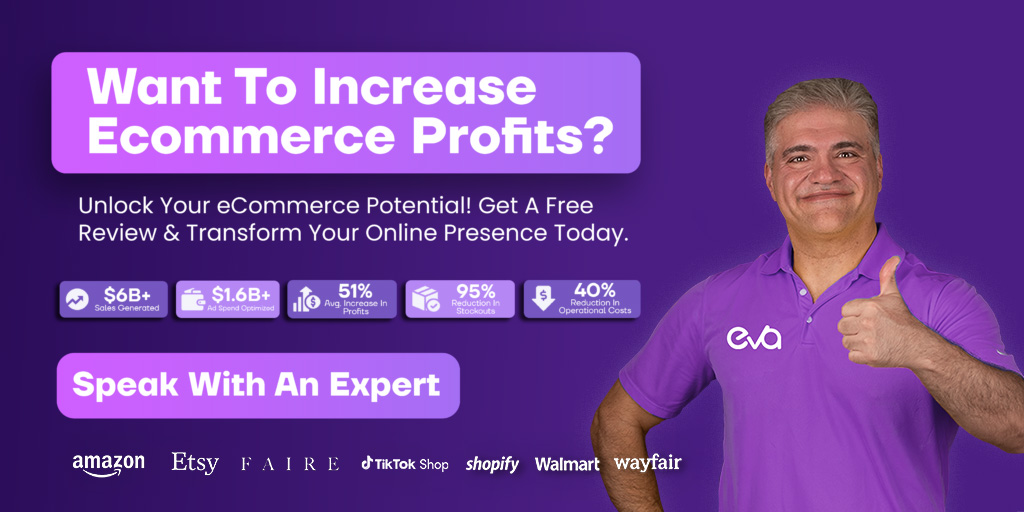
Looking for tailored assistance? If you need specialized support, our agency services and complimentary logistics solutions are designed to propel your brand forward.
FAQs
PPC helps by driving initial traffic and sales, boosting organic rank over time as Amazon’s algorithm detects conversions.
A high conversion rate is key, influenced by listing quality, pricing, and customer reviews.
Yes, Eva Commerce’s AI platform supports advertising strategies on multiple marketplaces including Amazon and Walmart.
Regularly, based on performance data. Daily monitoring is recommended for optimal adjustments.
A daily budget of at least $200 is suggested to see significant results.
It ensures you target the most relevant and high-converting keywords, maximizing the effectiveness of your ad spend.
Amazon’s Brand Analytics, and Eva’s AI platform are highly effective.
It can vary, but typically within a few weeks of consistent, optimized campaigns.
Overbidding, not monitoring campaigns regularly, and targeting too many keywords at once.
By providing AI-driven insights and expert recommendations tailored to your business needs, ensuring efficient and profitable ad campaigns.
By following these strategies, you can rank your products on Amazon’s first page organically, saving on PPC costs and boosting profitability.
Utilize Eva Commerce’s powerful AI tools and expert support to maximize your advertising efficiency and achieve sustainable growth.

